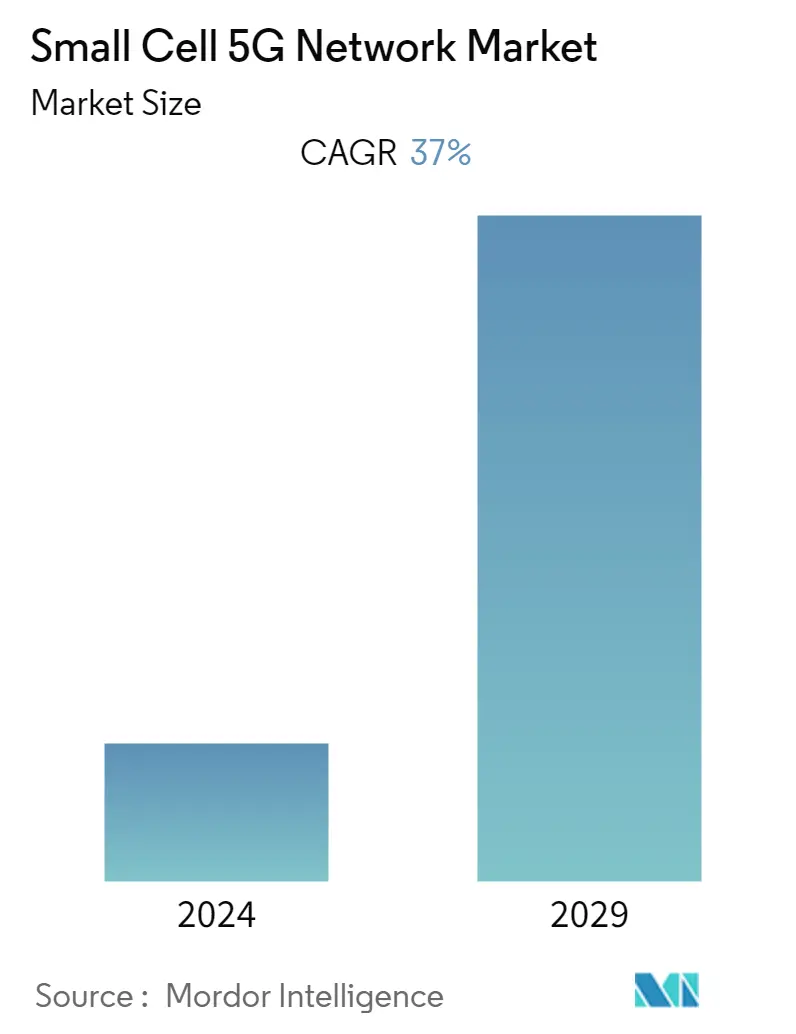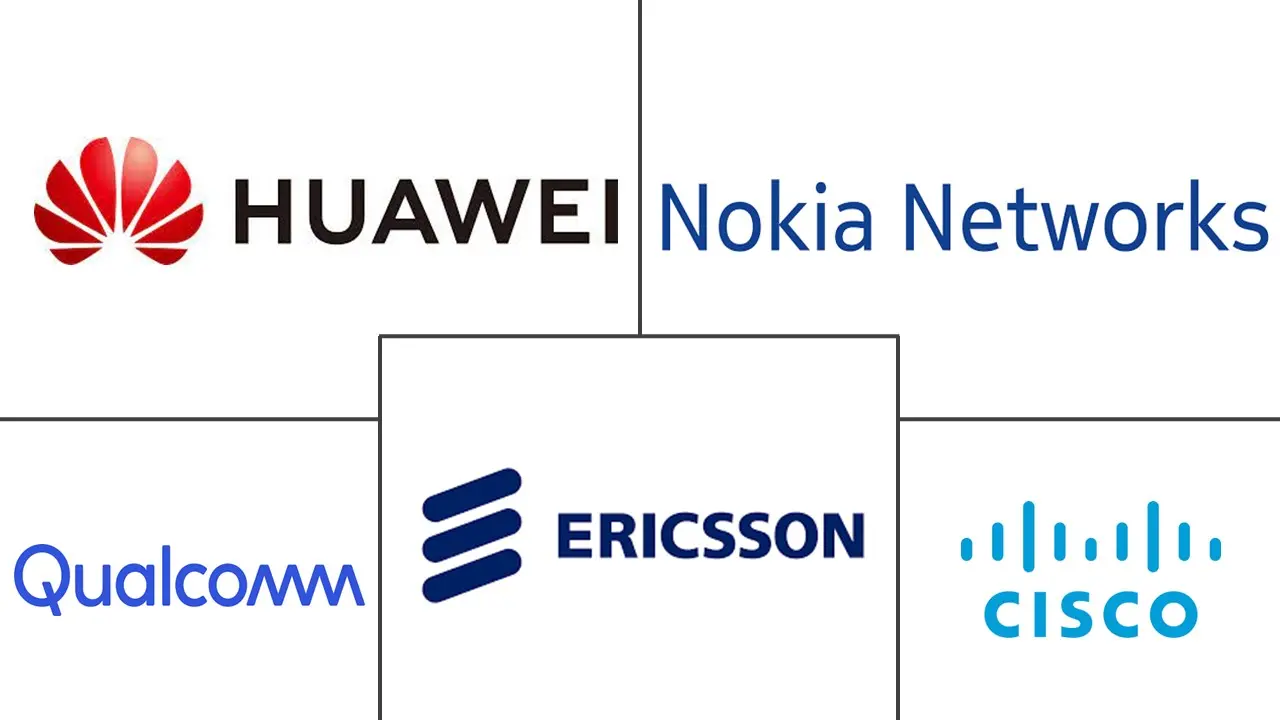Market Size of Small Cell 5G Network Industry

| Study Period | 2019 - 2029 |
| Base Year For Estimation | 2023 |
| CAGR (2024 - 2029) | 37.00 % |
| Fastest Growing Market | Asia Pacific |
| Largest Market | North America |
| Market Concentration | Medium |
Major Players
*Disclaimer: Major Players sorted in no particular order |
Need a report that reflects how COVID-19 has impacted this market and its growth?
Small Cell 5G Network Market Analysis
The Small Cell 5G Network Market is expected to register a CAGR of 37% during the forecast period(2024-2029).
- Small cells are expected to be the foundation of future global 5G networks. The deployment of 5G small cells at a large scale and required speed worldwide is made possible by industry coordination, making 5G a reality. Although 5G promises to be cheaper and faster, it requires expanding the wireless network using tiny cells.
- Small cells are essential in the current environment, particularly for applications that demand more bandwidth and the growing number of connected devices. For example, Cisco Systems Inc predicts that 500 billion devices will be online by 2030. Additionally, 5G telecom providers are focused on installing small cells in low-frequency bands to provide customers better coverage.
- The increasing mobile data traffic is driving the market growth. According to the Cisco Visual Networking Index (VNI), global mobile data traffic increased at a CAGR of 46% from 2017 to last year, reaching 77.5 exabytes per month. In the previous year, a 5G connection produced around 2.6 times as much traffic as the typical 4G connection, according to Cisco's study.
- Small cell deployment is a top priority for various operators, with 60% of operators believing them to be a crucial component of their 4G services. Leading carriers such as Vodafone, AT&T, and Softbank have already implemented small-cell technologies in addition to their macro networks. For example, Verizon has installed small cells in several US cities, including New York, Chicago, Atlanta, and San Francisco.
- In addition, 5G can be deployed on existing cellular radio frequencies but may enable operators to use higher radio frequencies (over 20 GHz) to make it operable, especially for mobile services. However, deployment at these frequencies is only possible in constrained areas, and signal penetration is restricted as it does not go through walls. This increases the adoption of small cells for in-building applications, with excellent connectivity for smartphones and IoT devices.
- The COVID-19 outbreak had a significant impact on the mobile sector. In the short term, the 5G rollout in several markets will be further delayed, and its services will be the hardest hit. Consumers may be unable to spend on small cell 5G devices as it is still considered a niche market. According to Groupe Speciale Mobile Association (GSMA) Intelligence's consumer survey, most respondents had limited interest in upgrading to 5G services. For instance, according to the report, nearly 80% of consumers in the United Kingdom did not plan to upgrade.
